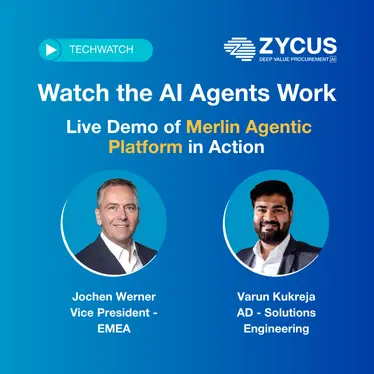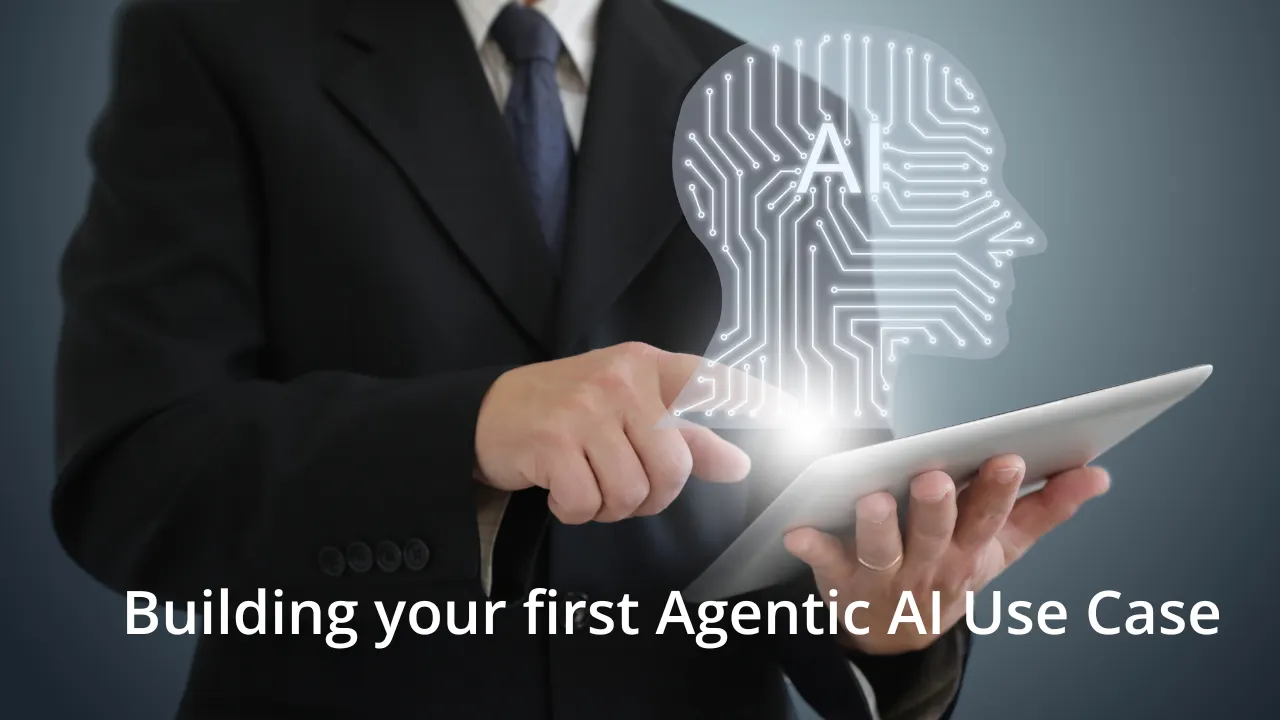Hey there! I’m Merlin, the brain behind Zycus’ Intake Management System, and today I want to address one of the most overlooked barriers to procurement success: Stakeholder engagement in procurement. While procurement teams are equipped with cutting-edge tools, they’re still struggling with procurement intake processes like delayed projects, incomplete requests, and frustrated users.
The real issue? Poorly managed stakeholder engagement—not just with internal teams but also with external partners like suppliers and vendors. It’s a challenge that affects procurement teams globally. But there’s good news. In the latest Forrester Wave™ Q3 2024 report, it was revealed that organizations adopting AI-driven intake solutions have achieved 67% faster intake times and a 25% boost in user experience. Being a part of this change, I can certainly vouch for this 🙂
Let me show you how I’m transforming procurement from a bottleneck into a strategic enabler of business success, addressing challenges that hinder internal and external stakeholder engagement while paving the way for smarter, more efficient workflows.
The Evolution of Stakeholder Expectations
Remember when filling out procurement forms felt like filing your taxes? Those days are long gone. Today’s stakeholders live in an Amazon-powered world where one-click ordering and real-time tracking are expected, not optional. Modern intake processes are no longer just about technology—they’re about aligning with these heightened expectations and creating frictionless experiences. However, the reality remains far from ideal. According to Gartner research, 80% of procurement interactions still involve manual touchpoints, costing organizations an average of 12 hours per week for unnecessary follow-ups and clarifications.
Read more: The Evolution of Intake Management: From Bolt-On to Built-In
The shift toward digital collaboration platforms further highlights this transformation, setting a new standard for best practices for stakeholder communication in procurement. According to Gartner, Organizations that fail to adapt face staggering consequences like:
- 45% increase in maverick spending due to untracked procurement activities.
- 23% longer procurement cycles, delaying critical business projects.
- 34% higher processing costs resulting from inefficiencies.
- 70% decrease in stakeholder satisfaction, leading to strained relationships.
These numbers underscore the urgent need to address evolving expectations across the stakeholders through smarter, more adaptive procurement processes.
Smart Workflows: The Foundation of Stakeholder Trust
“Hey Merlin, can you help me source a new vendor for our upcoming project?” This simple request traditionally would trigger a cascade of forms, emails, and follow-ups. Now imagine a supplier asking for updates on their onboarding status or requesting compliance clarifications—it’s the same cumbersome process.
With smart workflows powered by AI-driven procurement systems, that complexity is a thing of the past.
Through conversational AI, I act as your procurement concierge, seamlessly guiding internal teams and external stakeholders through every step:
- Dynamic Categorization: Automatically suggest relevant categories and specifications based on the stakeholder’s request.
- Real-Time Validation: Check requirements against procurement policies and flag discrepancies immediately.
- Intelligent Routing: Direct requests to the appropriate teams based on content and context, eliminating guesswork.
- Continuous Learning: Analyze past interactions to streamline future requests, personalizing the experience.
Read more: Leveraging Conversational AI in Procurement
Visibility is key to building trust. My stakeholder-specific dashboards offer:
- Personalized overviews of all active requests.
- Milestone tracking with estimated completion dates.
- Proactive notifications about potential delays or required actions.
- Historical insights to improve planning and forecasting accuracy.
These innovations have reduced policy violations by 40%, slashed processing times, and maintained a 95% stakeholder satisfaction rate, underscoring the transformative power of AI-driven smart workflows for internal and external users.
Meeting Stakeholders Where They Work
Integration is about more than just technology—it’s about embedding procurement workflows into the tools stakeholders already use daily. By integrating with collaboration platforms like Microsoft Teams, I’ve redefined procurement accessibility:
- Instant Procurement Access: Internal stakeholders can initiate requests, track statuses, and approve actions directly within their collaboration tools, while suppliers gain access to a dedicated portal for real-time updates on their submissions.
- One-Click Approvals: Approve requisitions or actions instantly through chat-based interfaces.
- Real-Time Collaboration: Facilitate seamless communication between procurement teams and stakeholders without switching platforms.
- Mobile Accessibility: Ensure stakeholders on the move — whether internal approvers or external suppliers — can participate in procurement workflows without delays.
Read more: Building a Best-in-Class Procurement Approval Workflow: Key Considerations and Strategies
The impact of this integration is profound:
- 89% reduction in platform switching time, keeping stakeholders focused on core tasks.
- 76% faster approval cycles, reducing bottlenecks.
- 92% stakeholder adoption rate within three months of deployment.
- 45% decrease in training requirements, thanks to intuitive workflows.
By meeting stakeholders in their preferred digital environments, I simplify their experience and elevate procurement’s strategic value.
Measuring Success: Beyond Traditional Metrics
Traditional procurement metrics like cost savings and cycle times are no longer sufficient to gauge success. Modern procurement platforms prioritize stakeholder-centric KPIs that reflect true engagement and value:
Quantitative Indicators:
- 67% reduction in intake cycle times, ensuring projects stay on track.
- 25% enhancement in user experience, validated through user satisfaction surveys.
- 30% improvement in procurement efficiency, driven by streamlined processes.
- 85% reduction in status-related queries, thanks to real-time visibility for both parties
Qualitative Improvements:
- Increased stakeholder trust, with procurement teams seen as partners rather than gatekeepers.
- Enhanced compliance, as guided workflows, simplify adherence to procurement policies.
- Better data quality, enabling more accurate reporting and strategic insights.
- Stronger relationships between procurement teams and business units.
Download Whitepaper: Unlocking Deep Value in Intake Management with Merlin Intake
These metrics demonstrate that success in stakeholder management goes beyond operational efficiency—it’s about fostering trust and collaboration.
Strategic Inferences from Merlin’s Talk
To improve internal and external stakeholder engagement in procurement through smart intake workflows, consider these strategic steps.
- Audit Current Processes: Evaluate stakeholder satisfaction scores and identify pain points in existing intake workflows, both for internal teams and external suppliers.
- Leverage Conversational AI: Invest in top procurement software with robust AI capabilities to enable dynamic and intuitive interactions.
- Prioritize Real-Time Tracking: Ensure your system provides real-time status updates and predictive milestone tracking for both stakeholders.
- Streamline Integration: Choose platforms like Zycus Merlin Intake that integrate seamlessly with collaboration tools like Microsoft Teams.
- Focus on User Training: Develop targeted training programs to ensure smooth adoption and empower stakeholders to leverage the system effectively.
These recommendations will not only improve the efficiency of procurement workflows but also position procurement as a strategic enabler within your organization.
Conclusion: Elevating Stakeholder Confidence
Procurement is no longer just about processing transactions—it’s about building trust and delivering value. By leveraging AI-driven procurement tools and smart workflows, organizations can meet the expectations of both internal teams and external stakeholders, improve collaboration, and drive better outcomes across the board.
The future of procurement engagement lies in systems that are intuitive, responsive, and seamlessly integrated. With platforms like Merlin Intake, procurement teams can transform from reactive cost centers to proactive business enablers, strengthening their role in achieving organizational success.
Ready to elevate your procurement operations? Let Merlin Intake show you the way. Book a demo today.
Related Read:
- Procurement Workflow Management Made Simple: Benefits and Challenges
- Building a Best-in-Class Procurement Approval Workflow: Key Considerations and Strategies
- Taming the Approval Beast: Streamlining Approvals with Procurement Workflow Tools
- Whitepaper: The New Age of Procurement: GenAI Powered Interactive Workflows
- Solution: Procurement Workflow Management Software
- Solution: Zycus’ Merlin Intake Software
- How AI-Powered Chatbots Are Transforming Workflow Management
- Research Report: Invoice Workflow Automation (IWA)




























































